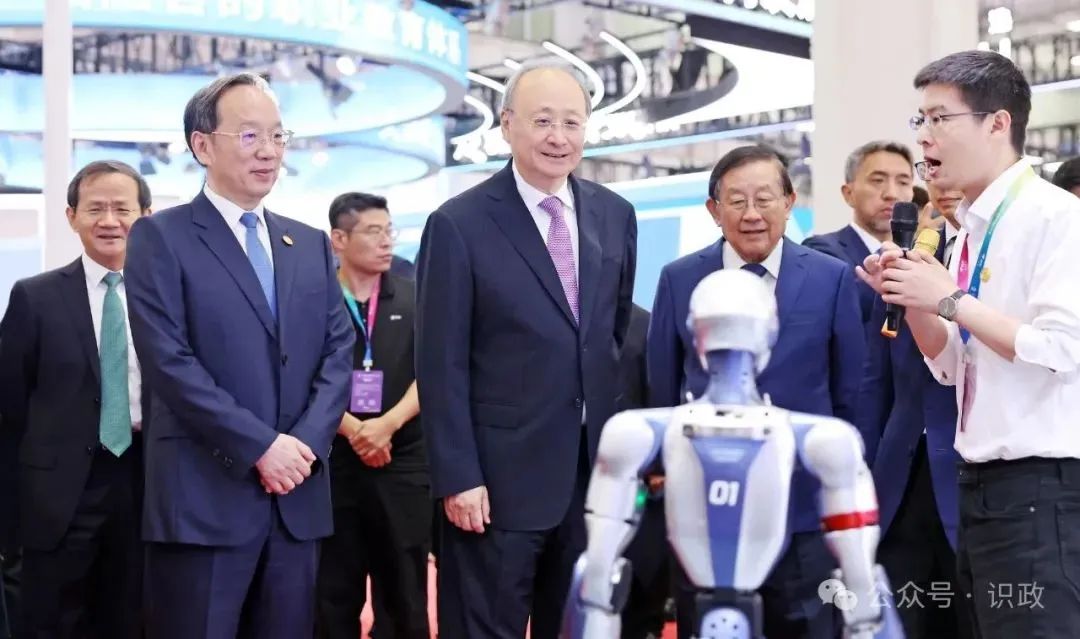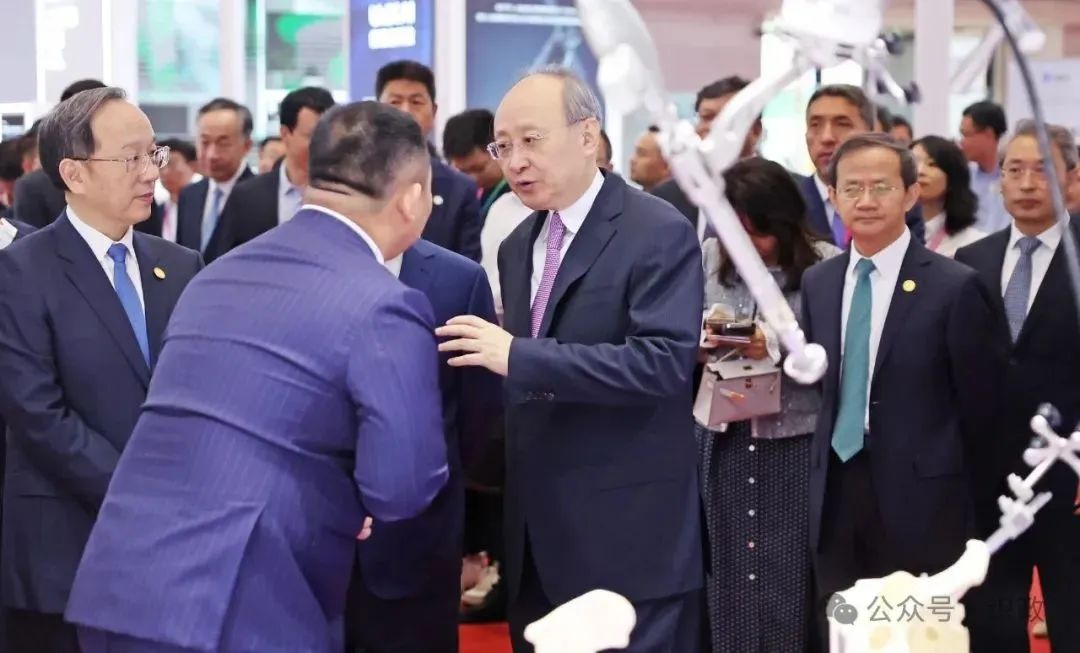On the morning of August 8, the World Robot Conference 2025 (WRC 2025) opened in the Beijing Economic-Technological Development Area (BDA).Yin Li, Member of the Political Bureau of the CPC Central Committee and Secretary of the CPC Beijing Municipal Committee; Wan Gang, President of the China Association for Science and Technology (CAST); Li Lecheng, Minister of Industry and Information Technology; and Yin Yong, Deputy Secretary of the CPC Beijing Municipal Committee and Mayor of Beijing, attended the event.

Jointly Launching WRC 2025
In his speech, Wan Gang emphasized that China’s strategy for advancing innovation in robotics has been anchored on the guiding principle of “empowering the real economy and supporting social development”. With steady improvements in innovation capacity and industrial strength, China has remained the world’s largest robotics market for years, becoming a key pillar of the global robotics ecosystem. He stressed the need to strengthen basic research to cement the foundation of sci-tech innovation, thereby driving robotics innovation and industrial growth. He called on greater efforts to build collaborative innovation platforms to enhance synergies among the government, enterprises, universities, research institutions, and end users, and to foster the integration of technological and industrial innovation. He also stressed the need to refinethe robotics standards system, strengthen testing and certification capabilities, nurture ecosystem-led platforms, develop an open-source hardware and softwareenvironment, and encourage investment from venture capital funds. Wan highlighted the importance of cultivating a technology application ecosystem to accelerate scenario-based technological iteration and advance high-end products from being “usable” to “user-friendly.” This requires further developing infrastructure, such as computing power networks and industry datasets, as well as accelerating the promotion and adoption of humanoid robots. To conclude, Wan called for expanding networks of exchange and cooperation, leveraging the role of scientific societies and experts to enhance international collaboration in areas such as R&D, industrial development, standards formulation, talent cultivation, and safety governance. Advancing research and public awareness on AI ethics will help foster a robotics ecosystem featured by global collaboration and innovation.
Yin Yong pointed out that, as robots are a key driving force in developing new quality productive forces and shaping an intelligent lifestyle, Beijing has been leveraging its technological and talent strengths to foster generic technologies, expand application scenarios, build industry exchange platforms, and enhance the supply of production factors in this field. As a result, the city’s robotics industry ranks among the top in China. Looking ahead, Beijing aims to build a globally influential hub for robotics innovation. It will pursue manufacturing-led development by establishing a pilot-scale testing and verification platform for humanoid robots and coordinating with Tianjin and Hebei to strategically deploy key components, thereby promoting the progressive development of high-level, large-scale production capabilities for humanoid robots. Beijing will strengthen relevant platforms by upgrading the Beijing Embodied Artificial Intelligence Robotics Innovation Center (HUMANOID), developing the first national-level testing and verification platform for humanoid robots, and facilitating breakthroughs in frontier and disruptive technologies for general-purpose robots. In addition, the city plans to optimize enterprise services by enhancing the brand influence of major events such as the WRC, the World Humanoid Robot Games, and the Humanoid Robot Half-Marathon. Beijing will take the lead in setting up specialized service institutions such as the robot 4S store, continue opening public service application scenarios, and build itself into a global leader in human-robot collaboration.
At the opening ceremony, Kathleen Kramer, President of the Institute of Electrical and Electronics Engineers (IEEE); Zou Ciyong, Deputy to the Director General of the United Nations Industrial Development Organization (UNIDO); and Xin Guobin, Vice Minister of Industry and Information Technology, delivered remarks. Qiao Hong, President of the World Robot Cooperation Organization (WRCO), released the “Trends in Embodied Intelligent Robots (2025)”. Jin Wei, Member of the Standing Committee of the CPC Beijing Municipal Committee and Vice Mayor of Beijing, together with Xu Xiaolan, Vice Chair of China Zhi Gong Party Central Committee, Vice-President of All-China Women’s Federation, and President of Chinese Institute of Electronics, joined Chinese and international guests in launching “Robot World 2.0”. The opening ceremony also featured a video unveiling the “10 Most Promising Application Scenarios for Humanoid Robots (2025)”.


Inspecting Cutting-Edge Achievements in Robotics Innovation and Industrial Development
After the opening ceremony, participating leaders visited the exhibition hall of the 2025 World Robot Expo. They toured the booths of the National and Local Co-built Embodied Artificial Intelligence Robotics Innovation Center, JD.com, Inc., Hangzhou Unitree Robotics Co., Ltd., and SIASUN Robot & Automation Co., Ltd., as well as exhibition areas featuring health and wellness robots and the “Robot World 2.0” miniature scenario. This visit offers a deep dive into the cutting-edge achievements in robotics innovation and industrial development.
The WRC has become a premier global event for innovation, industry advancement, and international cooperation in the field of robotics. This year’s edition, themed “Making Robots Smarter, Making Embodied Agents More Intelligent”, comprises an opening ceremony, a main forum, and a series of supporting activities. Running in parallel are the World Robot Expo and the World Robot Contest. More than 200 domestic and international robotics enterprises are showcasing their products, including over 100 global debuts. The Contest has attracted over 10,000 outstanding contestants from more than 6,000 teams representing nearly 20 countries.
Zhao Lei, Member of the Standing Committee and Secretary General of the CPC Beijing Municipal Committee, attended the opening ceremony. Also present were foreign government officials, representatives of international organizations, both domestic and international experts and scholars, and company representatives.


